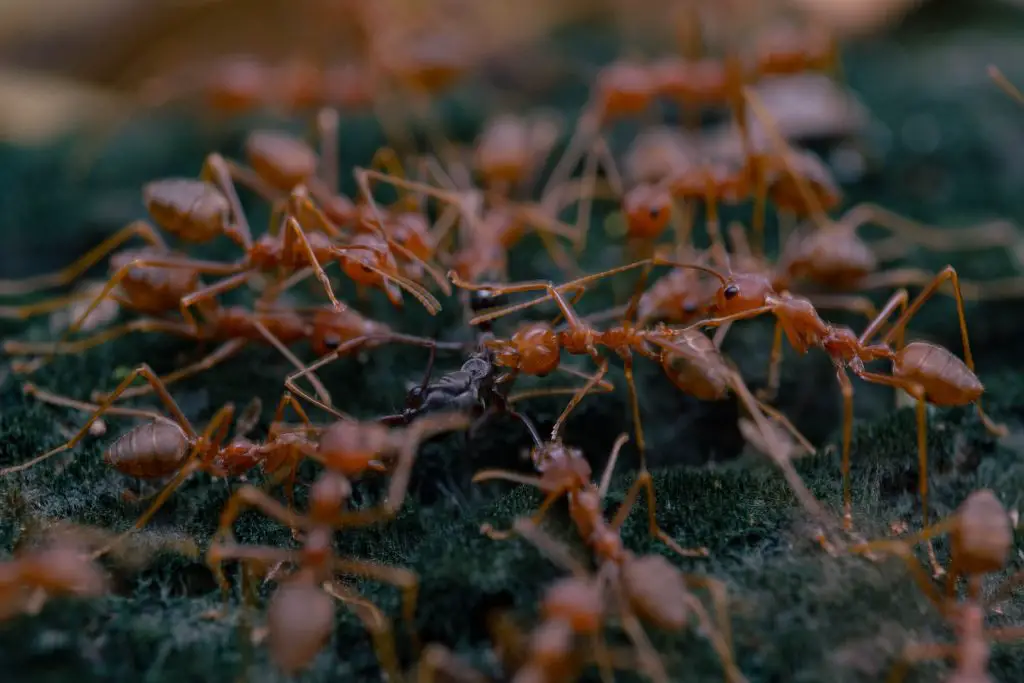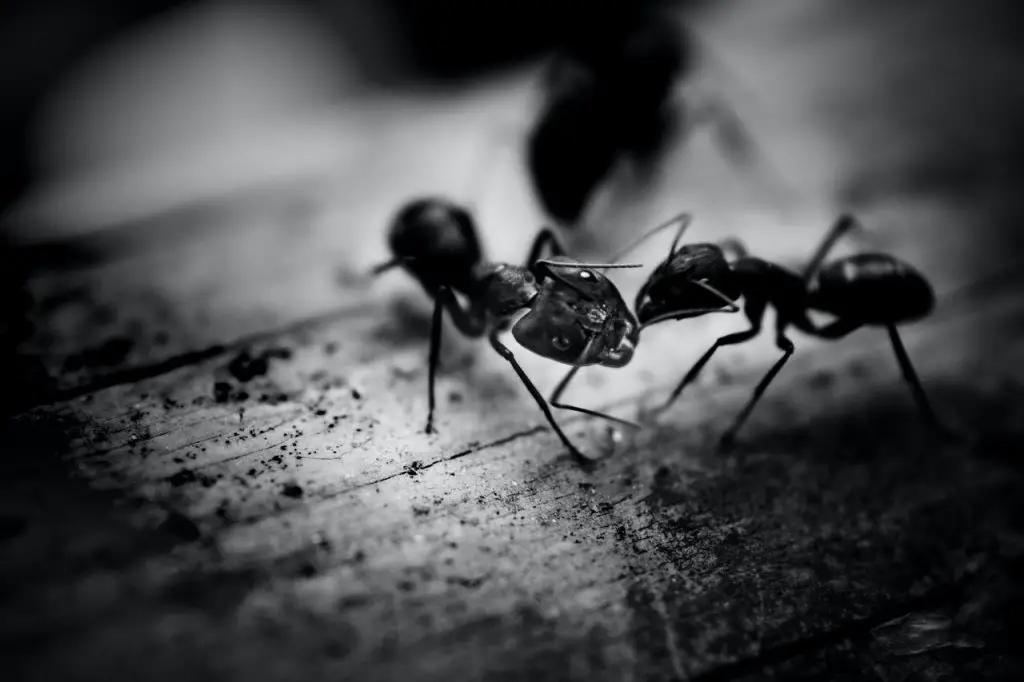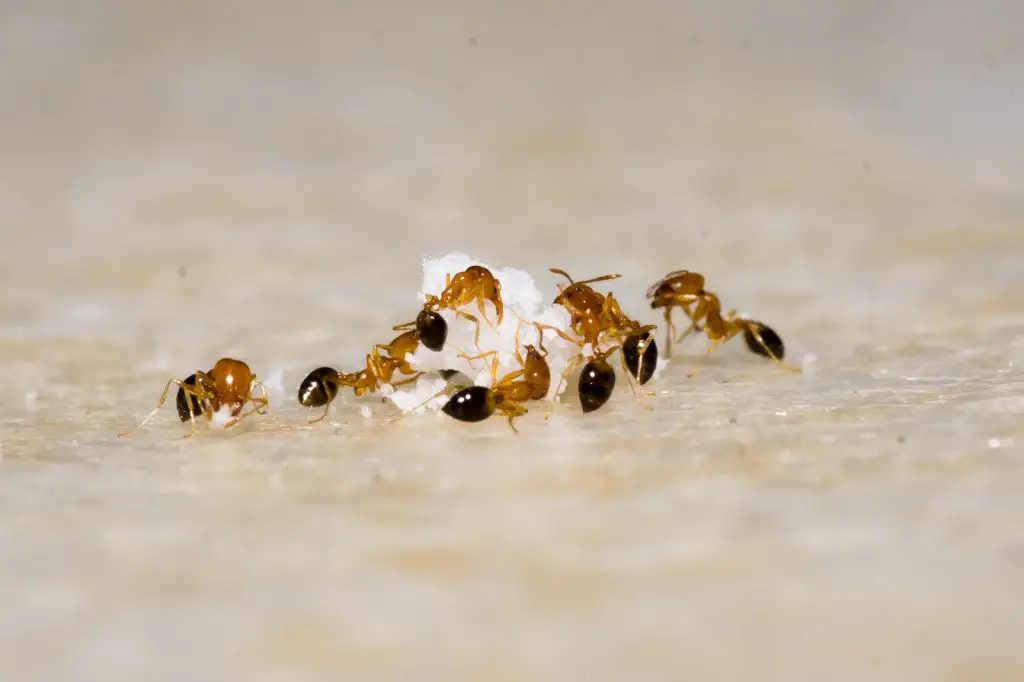Unmasking Nature’s Breathing Enigma: Unveiling the Mystery of Ant Lungs
Ants do not have lungs, Instead of having lungs, ants possess spiracles, which are openings on their exoskeleton.
These spiracles serve as entry points for oxygen into their bodies.
The spiracles are connected to a network of intricate tubes known as tracheae, which branch out throughout the ant’s body.
Do ants have lungs? Explained
Due to their small size, ants lack lungs as a respiratory system. Unlike humans, ants do not rely on mouths or noses to breathe.
Instead, they possess spiracles, which are a series of openings along their bodies.
These spiracles serve as entry points for air, allowing it to enter the ant’s body without the need for active pumping.
Depending on the ant species, they typically have around nine to ten pairs of spiracles distributed throughout their body.
The presence of spiracles in ants is a fascinating aspect of their respiratory system.
These tiny openings, positioned along their bodies, play a crucial role in their breathing process.
Each ant species typically has around nine to ten pairs of spiracles distributed throughout their body, ensuring efficient oxygen intake.
What is the Reason Behind Ants’ Absence of Lungs?
Due to their small size, ants have evolved to rely on efficient gaseous exchange through diffusion, eliminating the need for lungs.
Their bodies are designed to facilitate the exchange of gases without the presence of lungs.
Additionally, ants have the ability to close air passage valves during rest periods, minimising oxygen intake
In simpler terms, ants have discontinuous breathing patterns.
The duration of each breathing cycle can vary based on the ant’s physiological requirements and the surrounding environment.

This unique adaptation allows ants to meet their respiratory needs without the necessity of having lungs.
On the other hand, terrestrial animals with a larger body surface area cannot rely solely on diffusion to meet their air requirements.
These animals have evolved specialised organs and mechanisms to facilitate continuous respiration, meeting their constant air requirements.
These animals have developed specific organs and mechanisms to enable uninterrupted respiration, ensuring their continuous supply of air.
From where do ants breathe?
Ants utilise a respiratory system called the tracheal system for breathing.
The trachea, a network of tubes, is connected to openings called spiracles located on the ant’s exoskeleton.
These spiracles have valves that regulate the flow of air based on the ant’s oxygen requirements.
By controlling the opening and closing of these valves, ants are capable of holding their breath when necessary.
The breathing openings are positioned laterally along the body. A body segment has a pair of spiracles, but some segments don’t.
The number of spiracles in adult ants varies by species and stage of maturity, typically ranging up to a maximum of 10 pairs.
These spiracles serve as entry points for oxygen to be transported through the tracheal system, supplying oxygen to all parts of the ant’s body.
However, the function of the spiracular system goes beyond air regulation.
Ants also use their spiracles to control the opening and closing, preventing the entry of dust, parasites, and potential pests like fungi into their respiratory system.
Do Ants need oxygen?
Ants do require oxygen to survive, the difference is in how they receive it.
Because they are able to receive it directly, they don’t require the same complex respiratory system as we have.
Interestingly, the ant’s method of receiving oxygen is so efficient that they have the ability to close the spiracles when they are receiving too much.
Discontinuous ventilation in ants serves multiple purposes, one of which is to prevent water loss.
By regulating their breathing in an intermittent manner, ants minimise water loss through respiration.
This adaptation helps them survive in challenging environments with limited water availability.
Furthermore, ants utilise this intermittent gas exchange to their advantage in extreme situations.
For example, they can hold their breath for extended periods when submerged underwater, enabling them to survive floods and other water-related challenges.

Do ants suffocate?
Air enters and exits the ant’s body through the spiracular openings, facilitating the exchange of gases.
While ants do not possess lungs, they are susceptible to suffocation if their spiracles become obstructed or clogged.
Pest control chemicals designed to eliminate ants are potent because they target the ants’ ability to breathe, leading to suffocation and ultimately their demise.
Unlike humans and other lung-dependent animals who require oxygen reservoirs to survive underwater, ants possess a remarkable ability to hold their breath for extended periods without suffocating.
While humans can only dream of such an ability, ants can stay submerged for hours, showcasing their exceptional adaptation for aquatic environments.
While ants are adept at surviving underwater without suffocating, certain substances have the potential to clog and block their breathing openings, leading to fatal consequences.
Substances like baking soda powder and essential oils, such as neem, can impede the flow of air through the ants’ spiracles, disrupting their vital air circulation and ultimately causing suffocation and death.
Do ants have blood?
Unlike vertebrates, ants lack blood in their bodies and instead have a fluid called hemolymph flowing through their open circulatory system.
Hemolymph, which lacks red blood cells and haemoglobin, gives off a yellowish or greenish appearance.
It primarily carries nutrients, minerals, ions, and hemocyanin, but it does not transport oxygen like vertebrate blood.
Ants lack blood vessels, and the hemolymph directly bathes all tissues and organs, ensuring homeostatic balance and providing resistance against high temperature and pressure.
Although ants have a heart, they do not possess lungs and rely on their tracheal system to transport oxygen.
Conclusion
Ants possess a unique respiratory system that sets them apart from animals with lungs.
Their small size and efficient gaseous exchange through diffusion eliminate the need for lungs.
Instead, ants rely on spiracles and a network of tracheae to facilitate the intake and distribution of oxygen throughout their bodies.
This adaptation allows them to regulate their breathing and hold their breath when necessary.
Ants have evolved to thrive in diverse environments, including underwater, where they can withstand long periods without suffocating.
While they lack lungs and blood vessels, ants utilize an open circulatory system with hemolymph, a fluid that serves various functions but does not transport oxygen like vertebrate blood.
Understanding the respiratory mechanisms of ants sheds light on the remarkable adaptations found in nature’s diverse array of organisms.



